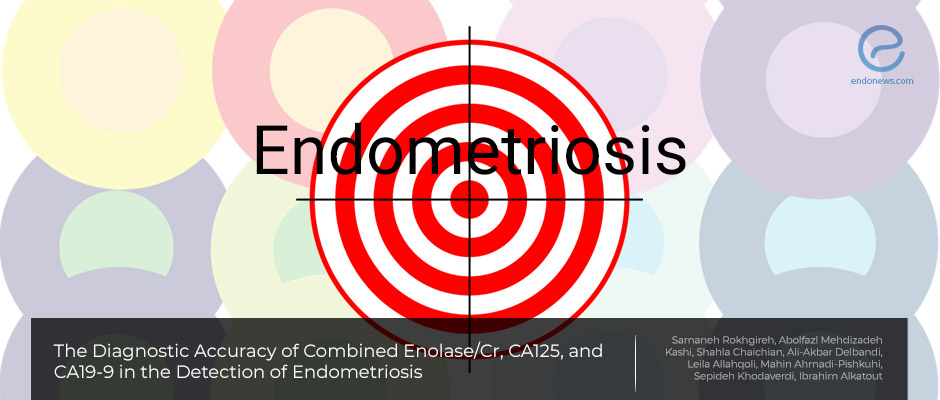Combination of noninvasive biomarkers in the identification of endometriosis
Nov 2, 2020
The combination of urine enolase, and serum CA125 & CA19-9 may be useful for the identification of endometriosis.
Key Points
Highlights:
-
The concurrent measurement of urine enolase, and serum CA125 & CA19-9 levels might be valuable as a noninvasive test for endometriosis.
Importance:
- The outcome of this study may help to detect endometriosis earlier and easier and even may help the treatment.
What's done here:
- Researchers retrospectively analyzed 84 women who underwent laparoscopy due to chronic pelvic pain, infertility, pelvic mass, and abnormal uterine bleeding.
- Serum levels of CA125 and CA19-9 and urine levels of enolase-1 were measured to verify the accuracy of these markers as a diagnostic tool for endometriosis.
Key Results:
- Serum levels of CA125 and CA19-9 were significantly higher in patients with endometriosis than in controls.
- Urine levels of enolase I and enolase/Cr were found to be higher in patients with endometriosis, however, the differences were not statistically significant.
- Endometriosis patients had significantly higher enolase-1 and enolase/Cr levels in the luteal phase than in the follicular phase
- The sensitivity of enolase, CA125, and CA19-9 was 97.8%, 69.5%, and 27.5%, respectively.
Limitations:
- The sample size is small.
Lay Summary
The combined measurement of urine enolase, serum CA125, and CA19-9 may be an accurate test for the prediction and detection of endometriosis. This is according to a study published in the journal BioMedical Research International.
The gold standard for the diagnosis of endometriosis is laparoscopy and histopathological examination. However, research on biomarkers as noninvasive diagnostic tests for earlier identification of endometriosis is going on.
Recently, a team of researchers from Iran and Germany conducted a cross-sectional study to verify the accuracy of combined analysis of urine enolase/Cr, serum CA125, and CA19-9 as a clinical diagnostic tool for endometriosis. The team, led by Dr. Rokhgireh., analyzed the data of 84 endometriosis patients who underwent laparoscopy due to chronic pelvic pain, infertility, pelvic mass, and abnormal uterine bleeding.
In the current study, the sensitivity of enolase/Cr, CA125, and CA19-9 was found to be 97.8%, 69.5%, and 27.5%, respectively. Serum levels of CA125 and CA19-9 were significantly higher in patients with endometriosis than in controls. Urine levels of enolase I and enolase/Cr were higher in patients with endometriosis, however, the differences were not statistically significant.
The sensitivity, specificity, positive predictive value, and negative predictive value of their combination was 65%, 66.6%, 71%, and 60.1%, respectively.
Consequently, the use of the combination of enolase/Cr, CA125, and CA19-9, may help to detect endometriosis earlier and easier and even may help to treat it better. Larger controlled studies are needed to confirm the data.
Research Source: https://pubmed.ncbi.nlm.nih.gov/33062681/
Enolase/Cr CA125 CA19-9 biomarker endometriosis diagnosis accuracy

